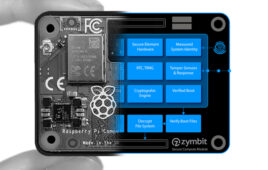Researchers at the University of Cambridge are playing with mini racecars to potentially operate as an experimental testbed for experiments in cooperative driving. The testbed has a total of 16 miniature Ackermann-steering vehicles known as Cambridge Minicars.
Oftentimes, cooperative driving investigations are expensive and require time-extensive procedures from the lack of available low-cost platforms.
“Our testbed architecture is designed for ease of use, and our key aim is the rapid development and testing of driving behaviors on car-like robots, such as the Minicar,” explains Prorok. “For this reason, we base the system control on an off-board (external) workstation that controls each Minicar individually.”
Together the team designed the miniature robotic cars, as well as a technique for path planning and motion control. Their path-planning algorithm uses positioning feedback that is measured by an external motion capture system and lane topography. This encompassing information allows the workstation to compute trajectories for each mini vehicle. The values are then transmitted to the vehicles over broadband radio.
“We also use the positioning information measured by the motion capture system to deduce which cars are ‘neighbors’ (i.e., are close to each other on the lanes),” adds Prorok. “This information is then fed into our algorithms, which emulate decentralized control and vehicle-to-vehicle communication. Our setup scales very easily to large numbers of Minicars. Hence, it lends itself naturally to testing cooperative driving strategies in systems composed of large numbers of vehicles.”
The testbed can also be used to implement state-of-the-art driver models and autonomous control strategies, which would evaluate the car in a more-realistic sense. The researchers have tested numerous experiments using their mini cars and “highway.”
“Our experimental testbed is unique in its size, scale, and cost,” says Prorok. “The Minicar is one out of very few openly available designs; it fills a price-range gap, and is especially attractive for robotics labs that already possess telemetry infrastructure, such as motion capture. The testbed allowed us to test various driving behaviors in a way that has not been done.”
In the team’s experiments using their testbed, they found that cooperative driving can increase throughput by up to 42 percent.
“Cooperative driving strategies hold a lot of promise for the future of traffic,” says Prorok. “However, more work still needs to be done in order to truly transition from a lab environment into the real world.”
Filed Under: Product design




